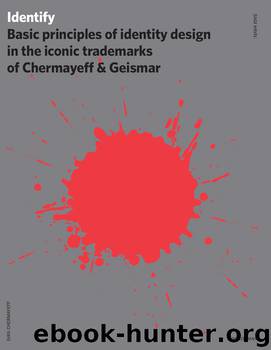Identify (prop) by Tom Geismar & Sagi Haviv & Ivan Chermayeff

Author:Tom Geismar & Sagi Haviv & Ivan Chermayeff
Language: eng
Format: epub
Publisher: Adams Media
Published: 2019-11-13T16:00:00+00:00
Banners march down the sidewalks of Manhattan’s Sixth Avenue to mark the boundaries of Rockefeller Center and to reflect the Art Deco style for which it is famous.
The 30-foot-high inflated “cleaner” figure on the facing page was a temporary device we designed to call attention to the cleaning program for the exterior walls of all the Center’s buildings.
The retail chain Best Products (1957–1997) offered the American consumer an unusual—and even avant-garde—shopping experience.
Called “catalogue show-rooms,” the chain’s warehouse-like stores displayed for customers one example of every product they sold. Each of the options for a particular product would be labeled “good,” “better,” or “best,” from which, obviously, the company derived its name. If a customer wanted to purchase a particular model, he or she filled out a ticket, paid a cashier, and waited for the product to come down a chute from the upper-floor storage space.
It was what Best Products did to package this retail concept, however, that made the company so interesting.
The Virginian family that owned the stores, Sydney and Frances Lewis, were passionate collectors of contemporary art. (It was said that they would sometimes accept art in exchange for store credit.) In the 1970s they began making interesting buildings of their big-box stores—and made architectural history. They hired smart, cutting-edge architecture firms like SITE to create, in one case, a postapocalyptic façade, or, in another case, a giant terrarium. These strange and wonderful exteriors became visitor attractions themselves.
In 1979, the Lewises came to Chermayeff & Geismar to create a similarly playful visual identity. They were among those rare clients who gave us free rein to be experimental. Our logo had to work with the exciting, dynamic environments created by these wonderful architects.
What we came up with was a self-referential typographic logo that was a literalization of the company’s name and business model: each letter larger than the preceding one, just as each product model was better than the last. On a sign, the letters themselves get thinner as they get taller, as though they were sinking under their own weight into the façade. We presented only a few variations of the same concept to the Lewises, as the idea seemed so unassailably right.
We feel privileged to have been part of this unique moment in postmodern design and architecture. The Lewises eagerly embraced artistic comment on their big-box stores, constantly taking chances with the consumer business model that had made them so successful. Such experimental and playful design was unusual for its time and, to our knowledge, hasn’t been done since.
Download
This site does not store any files on its server. We only index and link to content provided by other sites. Please contact the content providers to delete copyright contents if any and email us, we'll remove relevant links or contents immediately.
Wonder by R.J. Palacio(8431)
Mastering Adobe Animate 2023 - Third Edition by Joseph Labrecque(3722)
Unlabel: Selling You Without Selling Out by Marc Ecko(3574)
Ogilvy on Advertising by David Ogilvy(3485)
Hidden Persuasion: 33 psychological influence techniques in advertising by Marc Andrews & Matthijs van Leeuwen & Rick van Baaren(3455)
Drawing Cutting Edge Anatomy by Christopher Hart(3440)
The Pixar Touch by David A. Price(3347)
POP by Steven Heller(3298)
The Code Book by Simon Singh(3057)
The Art of War Visualized by Jessica Hagy(2932)
Slugfest by Reed Tucker(2924)
The Curated Closet by Anuschka Rees(2899)
Rapid Viz: A New Method for the Rapid Visualization of Ideas by Kurt Hanks & Larry Belliston(2815)
Stacked Decks by The Rotenberg Collection(2796)
365 Days of Wonder by R.J. Palacio(2738)
The Wardrobe Wakeup by Lois Joy Johnson(2718)
Keep Going by Austin Kleon(2682)
Tattoo Art by Doralba Picerno(2584)
Tell Me More by Kelly Corrigan(2579)
